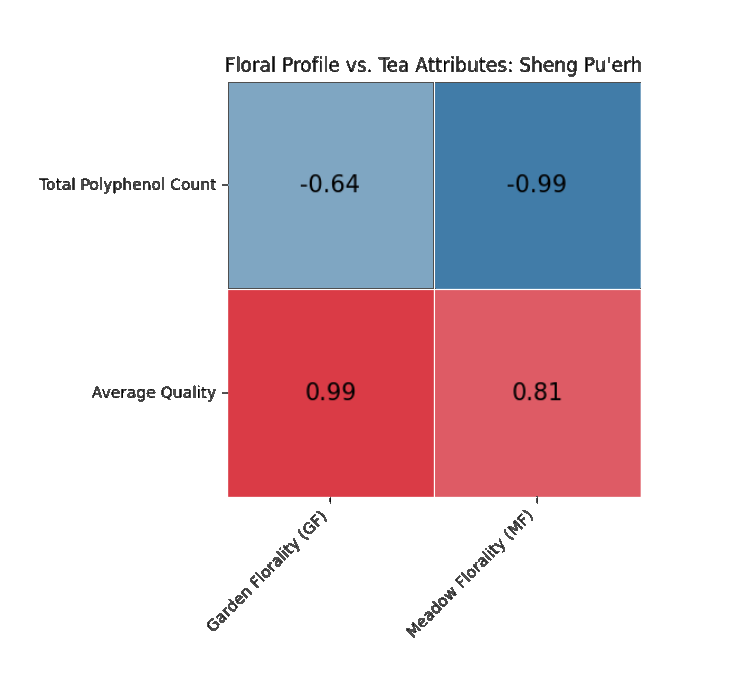

Pu’erh tea is a culturally significant, economically valuable fermented tea from China known for its aging process and complex flavor development. This study analyzes six pu’erh samples — three shou (ripe) and three sheng (raw) — using both chemical analysis and sensory surveys. The goal is to establish objective standards for pu’erh quality and pricing in a booming but inconsistently regulated market.
Despite the pu’erh market's valuation at over 22 billion yuan, quality assessment remains subjective and speculative. This project aims to correlate measurable chemical attributes like Total Polyphenol Content (TPC) with sensory evaluations to support more transparent and science-backed pricing standards.
Pu’erh tea differs from other teas due to its fermentation and aging, leading to evolving flavors. However, scientific analysis of pu’erh’s chemical and sensory changes over time remains rare. This study controls for terroir, cultivar, and fermentation method, blending lab assays with trained sommelier evaluations to fill a major gap in the field.
| Aspect | Basic Tea Chemistry Studies | General Sensory Studies | This Study |
|---|---|---|---|
| Tea Type Focus | Mostly green, black, and oolong | Mixed varieties, rarely pu’erh | Exclusive focus on shou and sheng pu’erh across aging windows |
| Fermentation Style Considered | Rarely considered | Sometimes referenced | Isolated and analyzed independently |
| Control of Variables | Often inconsistent | None | Controlled for terroir, cultivar, brewing |
| Chemical Analysis | Present but not linked to flavor | Absent or minimal | Lab-tested TPC via Folin-Ciocalteu assay |
| Flavor Profiling Method | Often absent | Untrained participants | Structured sensory survey with certified sommeliers |
| Quantitative–Qualitative Link | Generalized | Flavor only | Statistical correlation between TPC and flavor/quality |
| Time/Aging Factor | Absent | Absent | Comparative 3-year aging analysis |
This project developed a hybrid testing framework blending chemical analysis and expert sensory evaluation. It controlled for variables like terroir and brewing conditions to ensure accuracy and repeatability.

Two primary analyses were conducted:



Future research should explore longer aging periods to better understand when significant chemical and sensory changes occur. Deeper studies into fermentation conditions (like temperature and humidity during wodui) could optimize shou pu’erh quality. Expanding the participant pool and extending timelines will help refine the relationship between pu’erh chemotype and market valuation.